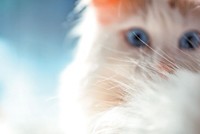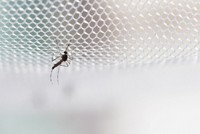Advertisement
Grab your lab coat. Let's get started
Welcome!
Welcome!
Create an account below to get 6 C&EN articles per month, receive newsletters and more - all free.
It seems this is your first time logging in online. Please enter the following information to continue.
As an ACS member you automatically get access to this site. All we need is few more details to create your reading experience.
Not you? Sign in with a different account.
Not you? Sign in with a different account.
ERROR 1
ERROR 1
ERROR 2
ERROR 2
ERROR 2
ERROR 2
ERROR 2
Password and Confirm password must match.
If you have an ACS member number, please enter it here so we can link this account to your membership. (optional)
ERROR 2
ACS values your privacy. By submitting your information, you are gaining access to C&EN and subscribing to our weekly newsletter. We use the information you provide to make your reading experience better, and we will never sell your data to third party members.
Environment
Newscripts
B.O. As I.D.? Sniffing Out Healthy Snacks
by Sarah Everts
March 2, 2015
| A version of this story appeared in
Volume 93, Issue 9

For decades, eye witnesses to a crime have pointed out perpetrators in police lineups. But what if the witness didn’t see the culprit ... yet was close enough to get a whiff of his or her body odor? According to researchers, the answer to this forensic conundrum is nose-witness analysis—cue drum roll—where witnesses to a crime pick out perpetrators based on their personal pong.
As if being the victim or witness of a crime weren’t bad enough, these folks would then be asked to sniff a selection of stinky suspects. Of course, if nose-witness identification meant bringing a culprit to justice, they might be game. But can it? Eyewitness identification’s track record doesn’t exactly inspire hope: According to the Innocence Project, a nonprofit legal group, “Eyewitness misidentification is the single greatest cause of wrongful convictions nationwide, playing a role in 72% of convictions overturned through DNA testing.”
However, a paper in PLOS One from a team of scientists led by Sandra C. Soares at the University of Porto, in Portugal, reports that our noses may be decent witnesses when it comes to violent crimes (2015, DOI: 10.1371/journal.pone.0116706).
Study participants were shown an authentic video of a violent crime and presented with a sample of body odor at the same time. A second group of subjects was shown an emotionally neutral video that was also paired with some armpit aroma. Afterward subjects were told to identify the correct body odor from six samples. The samples were in glass jars; nobody actually did any armpit sniffing.
According to the researchers, the “two experiments indicated that B.O. associated with male characters in authentic videos could later be identified in B.O. lineup tests well above chance.”
Achieving statistical significance makes for good science, but “well above chance” may not cut it in a courtroom when it comes to proving someone is guilty “beyond any reasonable doubt.”
Nose-witness analysis faces a lot of other challenges, not the least of which is getting cops to sample a suspect’s body odor. And how will other body odors be chosen to round off the rest of the lineup? Finally, has anyone considered the possibility of stinky setups?
Trained perfumer-turned-odor-artist Sissel Tolaas has already shown that she can re-create the body odors of 16 men using the same toolbox of scent compounds that fragrance companies use to make blockbuster colognes. In some future dystopia, criminals may solicit the skills of evil perfumers to create the scents of people they wish to frame, then wear those scents themselves before committing nefarious crimes, so that hapless victims then identify the wrong person. But perhaps we are getting ahead of ourselves.
Although some scientists want us to use our sense of smell to bust criminals, another group of researchers is discovering how fruit flies sniff out a healthy meal. A team of chemical ecologists led by by Marcus C. Stensmyr at Lund University, in Sweden, wondered what specifically draws fruit flies to fruit, which they use as food and a place to lay eggs.

It turns out that they’re attracted to some of fruit’s healthiest components: its antioxidants. More specifically, the flies are enticed by volatile ethylphenol molecules. Yeast in fruit produce these volatiles from hydroxycinnamic acids, a family of potent antioxidants, and fruit flies find them so enticing they simply cannot resist digging in (Curr. Biol. 2015, DOI: 10.1016/j.cub.2014.11.062). If only this were true of humans, we might always prefer fruit to french fries.
Sarah Everts wrote this week’s column. Please send comments and suggestions to newscripts@acs.org.





Join the conversation
Contact the reporter
Submit a Letter to the Editor for publication
Engage with us on Twitter